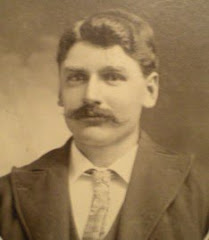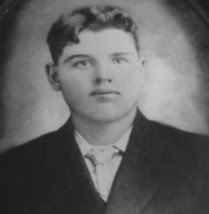Peacocks were involved in carpet weaving in Philadelphia for several generations. This website discusses the development of the industry.
http://www.workshopoftheworld.com/kensington/kensington.html
"Traditionally, Kensington was known as the original hub of working class Philadelphia, with both native and immigrant workers living close to their work sites or working at home. Early nineteenth century industry in the area was diverse; it included glass factories and potteries, wagon and machine works, and a chemical factory. Many of the earlier sites were located in West Kensington (west of Front Street), spreading north from the Spring Garden District and Northern Liberties. However, the textile trades came to dominate Kensington by the mid-nineteenth century. The genesis of the ingrain carpet industry was centered around Oxford and Howard Streets in West Kensington, 1 where some mills still stand. Other early carpet mills in this area are now gone, but they included James Gay's Park Carpet Mill, the Dornan Brothers' Monitor Carpet Mill, William J. Hogg's Oxford Carpet Mill, the Stinson Brothers' Columbia Carpet Mill, and the carpet mills of Horner Brothers, and Ivins, Dietz, and Magee (later of Hardwick and Magee). The earliest carpet factories operated mainly through "outwork" the owners providing yarns to workers who hand loomed the goods in their homes. As these small textile concerns grew, their owners built small factories in East Kensington. 2 Associated textile trades, such as dye works, yarn factories, woolen and worsted mills, 3 cotton mills, and even textile machinery factories were often located in the same building or complex. After the 1860s, Kensington was filled with two story brick rowhouses and steam powered mills. In 1883, Lorin Blodget described the northward expansion of the area as having had rapid and successful development from vacant fields a few years ago, to a densely built up city, all of which is recent, and most of it within ten or twelve years. It is wellbuilt, with broad and well paved streets, the mills being especially well located, and many of those recently erected being fine specimens of architecture 4....
Small firms comprised most of the textile industry in Kensington in the nineteenth century. For example, in 1850, most of the district's 126 textile firms each had only one owner and few employees on site. 6 At the same time, one third of the firms and workers in textiles in Philadelphia were in Kensington. 7 Irish, English, Scotch, and German immigrants, as well as native workers and owners lived in the neighborhood, although not always harmoniously, as the nativist riots of the 1840s indicated. 8 These 4,000 plus workers maintained a tradition of handlooms into the 1880s. Handloom operators were predominately male, with female workers often working in the power mills tending looms as well as performing other service tasks. 9"
Friday, June 28, 2013
Subscribe to:
Post Comments (Atom)











No comments:
Post a Comment